UPS and battery array: where to put? Wait you
Until now, the problem of the accumulation (accumulation) of electricity existed without any global changes, no one could offer a technological breakthrough in this field. It was the same Gaston Plante battery in 1859 , modified by various auxiliary technologies and equipped with improvements in the field of electrochemical processes, combating the release of hydrogen, other body materials, etc. At the turn of the beginning of 2000, various types of lithium batteries appeared that confidently replace standard alkaline, calcium, AGM and gel batteries. At the moment, lithium-ion and lithium-polymer batteries have already conquered the home appliance market, the technology has been worked out and allows you to make batteries of any shape, capacity and size. The time has come to spent industrial solutions based on lithium batteries. I propose to understand why the future in server and data centers is behind this technology ...

This technology, although not a kind of cardinal breakthrough, still has a number of obvious advantages. And the most interesting for industrial solutions in the IT field is the specific gravity of batteries per unit area with a capacity comparable to lead batteries. The same characteristic can be considered as the specific power of batteries per unit mass - kWh / kg. But first things first.
So, today each of us has a phone in his pocket, in which a lithium battery works and it is already customary for everyone.
')

Fig. 1. Nickel battery for power tools
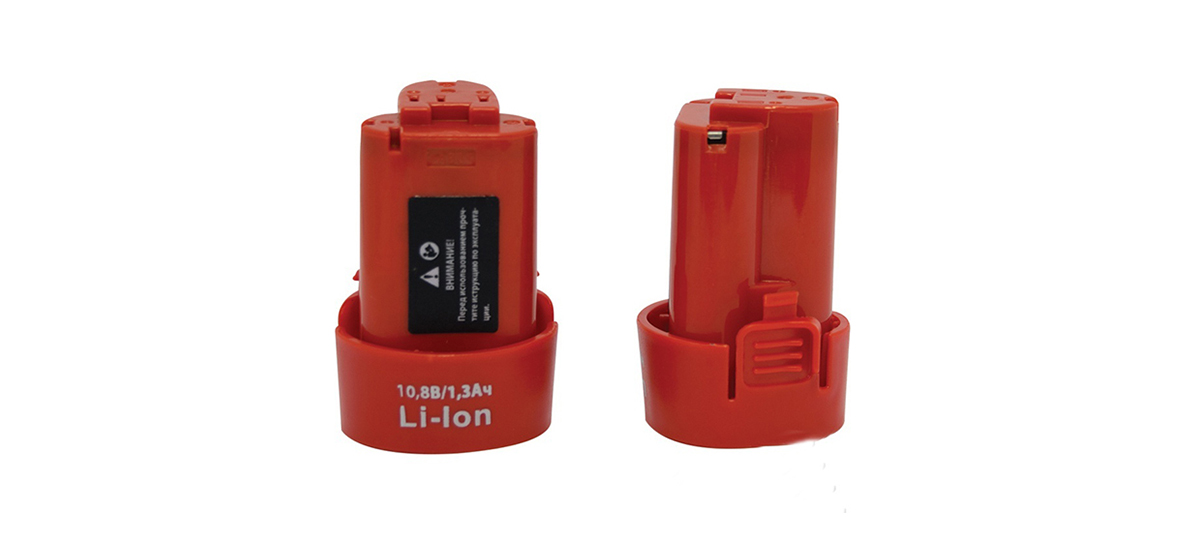
Fig. 2. Lithium battery for power tools
Take a hand-held power tool: just yesterday it was a removable battery, made on the basis of an assembly of nickel batteries Fig. 1 (previously lead). Today we see on the shelves of stores a huge amount of any power tools with lithium batteries, which are visually smaller, compact, lightweight, etc. Fig.2. And what about the price in the domestic sector? The same power tool with lithium batteries is only slightly more expensive (and sometimes cheaper) in relation to the outgoing generation, and ease of use is indisputable.
For comparison:
The difference in the specific mass of batteries of different types (Ampere * hour) reaches 2.2 times, that is, in one kilogram of a lithium battery there will be 2.2 times more capacity. But this is a biased comparison, because the batteries have different voltages. Let's try to recalculate the specific power values (specific power) W / kg, and we get: for a nickel-cadmium battery 39.3 W / kg, and for a lithium battery - 80 W / kg. The difference was more than doubled.
It should be noted that for screwdrivers and other energy-intensive home appliances, lithium-ion high-current batteries are used, which provide a high output current in a short period of time. At the same time, there is no voltage drop on the battery below the level of protection of the Li-Ion battery from deep overdischarge. A similar scenario is possible for the modes of wrapping and unscrewing heavy screws, nuts and other power tools, and in radio-controlled models at the start of the typewriter.
So what are the main advantages of lithium batteries compared to various types of classic electrolyte batteries?
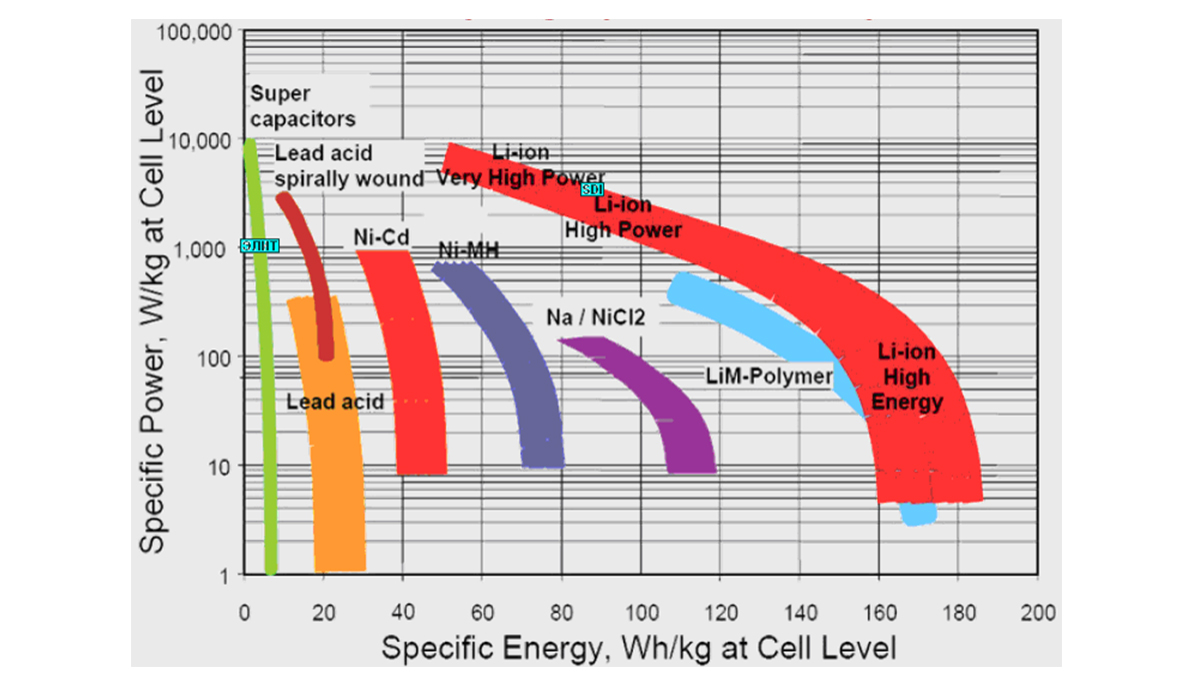
Fig.3. Graph of specific energy versus specific power of various types of batteries
As such, there is no electrolyte in a free state in a lithium battery. Instead, a porous separator soaked in electrolyte is used. Here lithium ions are used, which are bound by molecules of additional metals. When the battery is discharged, ions are transferred from the negative electrode (cathode) to the positive (anode) and vice versa during charging. The battery circuit assumes the presence of a separator separator between the two parts of the cell; this is necessary to prevent spontaneous movement of lithium ions. Diagrams of chemical processes of lead and lithium-ion batteries are shown in the figure.

Fig. 4. Chemical processes in lead batteries and lithium batteries
The class of lithium-ion batteries can be divided into subtypes of the main chemical material, which gives the battery its unique, intrinsic properties:

If we compare this classification with Figure 3, then the LFP type batteries can be attributed to the high-energy class, and the lithium-manganese LMO - to the class of average power capacity.
If we consider only the specific energy of different types of batteries, the structure is as follows:
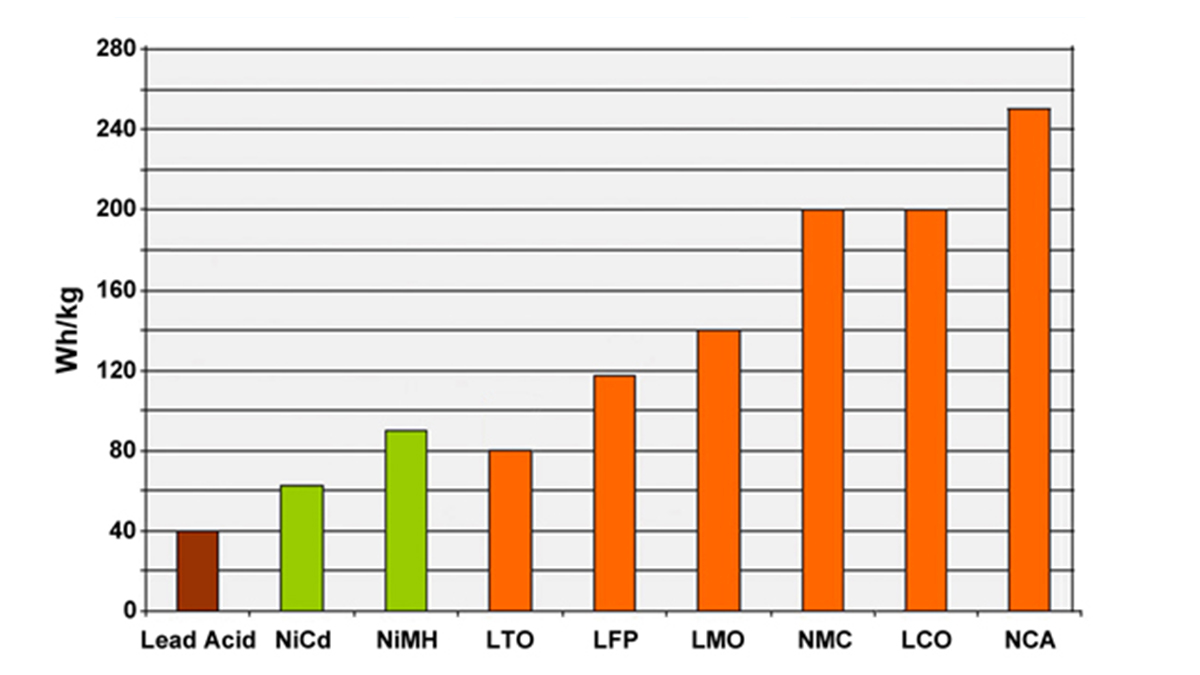
Fig. 5. The specific energy of various types of batteries (based on the site batteryuniversity.com)
The class of lithium-ion batteries can be divided into subspecies by form factor:

The most common type of lithium-ion batteries are 65 mm high cylinders, a little more than a classic AA battery, which is used in most household devices and remote controls.
At the moment, batteries for electric bicycles and electric scooters are made of this type of battery; it is these batteries that are found in any “non-modern” laptops. In addition, from these lithium batteries were collected batteries of the first releases of cars TESLA. See >>

Fig. 6. Appearance of a cylindrical LIP battery
The market leader in the production of prismatic cells is now Samsung CDI, a division of a well-known corporation. In the field of industrial solutions, LMO cells and batteries (modules) have been developed and successfully applied. The standard voltage cell of 3.7 V has a capacity of 67A * h, the module is assembled from 8 cells, has a mass of 17 kg, has a voltage of 24-33.6 V, and the specific energy is 140W * h / kg.

Fig.7. The appearance of a prismatic LMO cell manufactured by Samsung.
After the start of the hype with electric cars, hybrid cars and public transport, it was time to actively switch to Li-Ion batteries for industrial UPS solutions.
For example, the "low-energy" segment of industrial solutions is actively switching to lithium-ion batteries. Security system equipment suppliers are also not lagging behind and offer their solutions on lithium for backup fire and security systems. The main focus is on the absence of the need to replace the batteries for 10 years, instead of the usual 2 years. A similar trend is observed in the field of evacuation warning and control systems (SOUE systems), which also belong to fire-fighting systems. Previously, such systems were equipped with acid-lead type batteries. After 2-3 years, the customer, who exploited such systems, had a lead battery in the warning systems already critically losing their capacity, and there was often not enough money to upgrade the batteries. Thus, the fire and evacuation systems of the facility were nominally fully operational, but in fact could not provide battery operation in the event of an emergency. And the safe evacuation of people, depending on the object, is given at least 30 minutes.
In the case of using batteries on lithium, such problems can be forgotten.
If you look at the analytics of the production and use of different types of batteries, for example, here, you can say that “... concerns batteries, then current estimates of the cost of installing them vary from $ 200 to $ 800 per 1 kW of installed capacity. The lowest costs correspond to lead-acid batteries, since they are at a higher stage of technological development. This range corresponds to the lower limit of cost for PSPs, but it is much lower than other potential and new storage technologies. However, the main disadvantage of lead-acid and other ABs is their low lifespan compared to PSPs, which have much longer service lives. The service life of the battery varies significantly depending on the frequency of use, the rate of discharge and the number of deep-discharge cycles. "
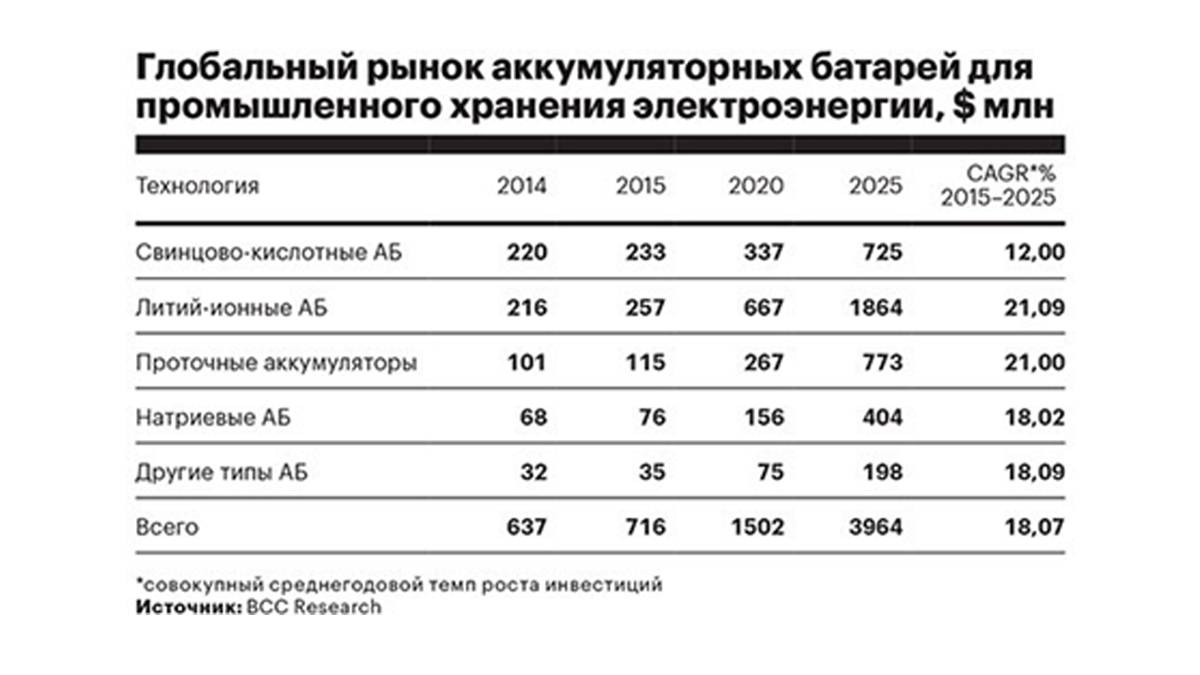
As we can see, the projected growth rates of lithium batteries significantly exceed the prospects of conventional batteries. In Russia, in 2017, on the website of the Ministry of Energy of the Russian Federation, the Concept for the Development of the Electricity Storage Systems Market in the Russian Federation was published. This concept also includes the production of Li-Ion batteries, "... there is a production reserve in Russia, but it requires development." The document predicts a reduction in the cost of energy storage systems of various types, in particular, for Li-Ion batteries, the cost is projected to decrease from $ 550 / kWh in 2016 to $ 300 / kWh by 2025. If Navigant Research forecasts are correct, then the cost of lithium batteries will drop another 40% relative to the current price level.
And what about the power of IT equipment in server and data centers? Let's get a look.
Real case.
One of our customers asked us to help solve the problem of powering a small server room. It seems to be nothing complicated, the usual work for us, in which we understand better than anyone.
But there are four complicating factors that are critical to the customer:
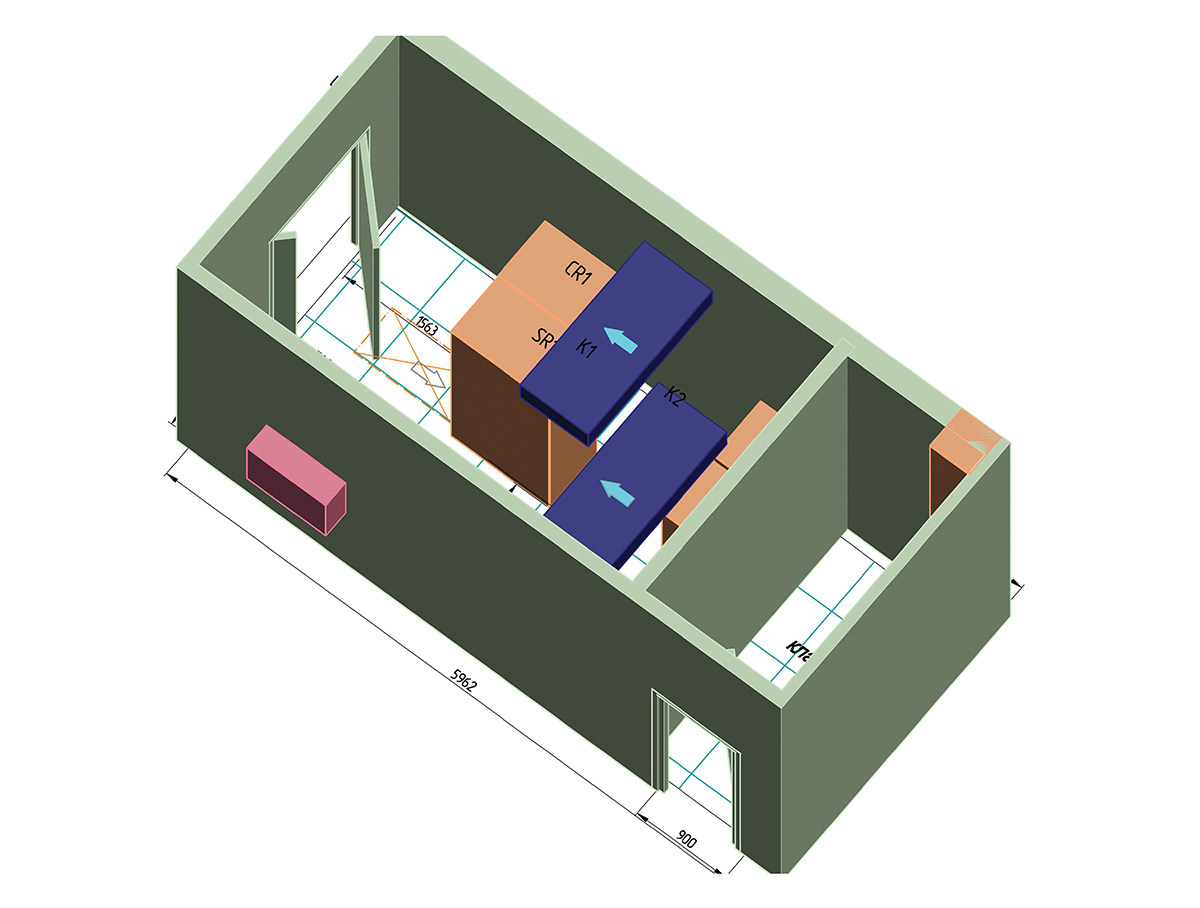
Fig.8. The appearance of the server plan.
You ask, what is there unusual?
First, the customer already had a negative experience in operating a UPS with an array of lead-acid batteries. And that's how it was:
It was the fifth year after the start of operation of a sufficiently powerful UPS, the battery cabinets were operated in normal modes, the climate in the room with batteries was stable and rationed. The UPS itself has demonstrated its readiness to provide the server for 15 minutes in the event of a power outage. It seems that it was time to change all the batteries in terms of service life, but the decision to replace everything was not taken at all. And at one point, there is a sudden disconnection of the network from the city. Do you think the UPS system worked at least 1-3 minutes to complete the services on the equipment? As if not so. The worst happened: the UPS did not switch to the batteries, due to the failure of one of them, all the servers and services that were running at that moment "lay down". Fortunately, it was not a bank, but a collocation (co-location) , and the scandal somehow settled.
The thing is that the classic battery monitoring system does not provide an objective view of the state of each battery in the line, in the cabinet. Defective battery can be identified only by conducting well-regulated measures to check the capacity and health of each lead battery. In the presence of a faulty battery, the entire array of lead-acid batteries must be replaced, and measures to monitor the status of each battery were not carried out for objective reasons:
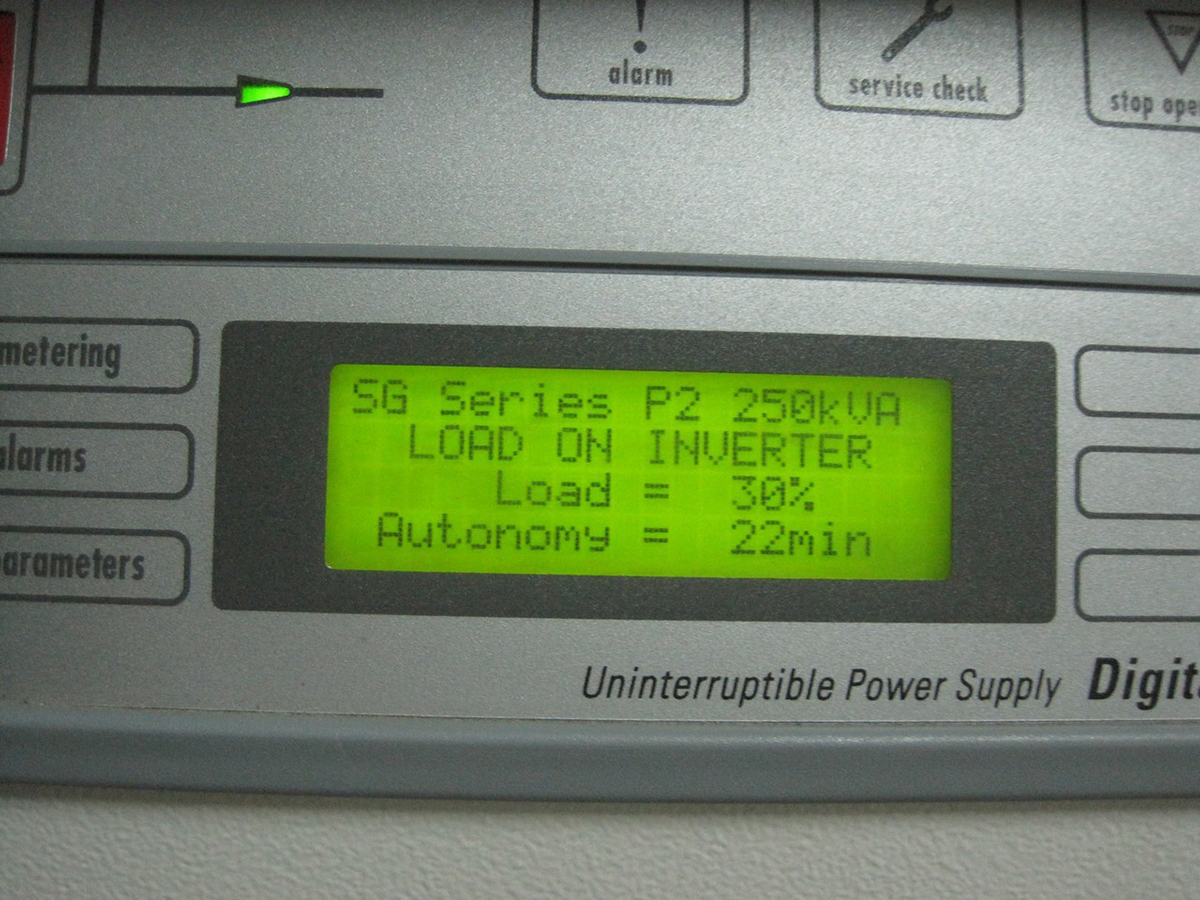
Fig. 9. The predicted battery life on the UPS on the eve of an accident in the data center
Secondly, it was established by calculations that it is impossible to install two battery cabinets weighing 980 kg each in the server room, since the load on the overlaps from the server racks and related equipment is already maximum. It required the development and installation of a steel unloading frame for the battery cabinet. This, in turn, caused a lot of organizational issues: providing down-time for the entire server, the frame should be bolted (welding in the existing office is impossible) and so on ...
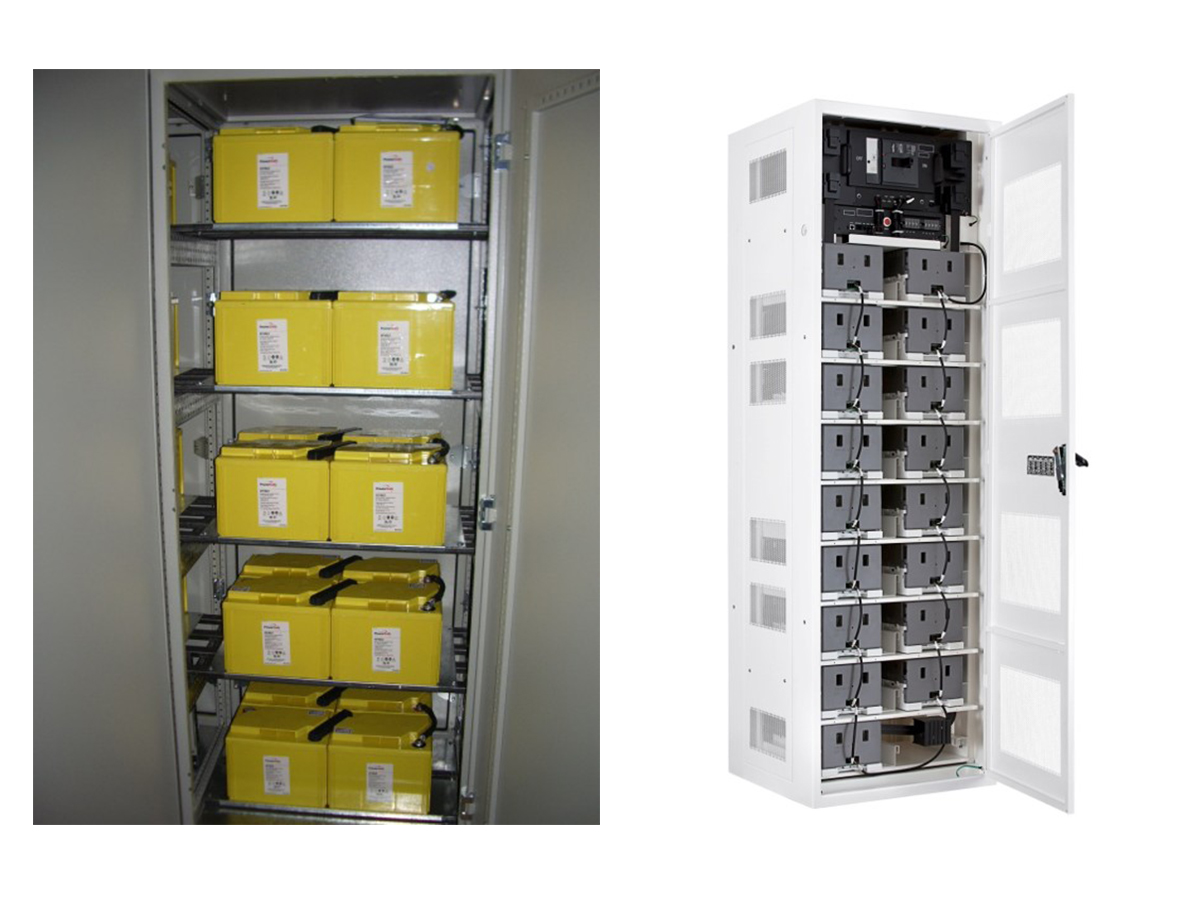
Fig. 10. Battery cabinet with conventional batteries (left) and lithium-ion cells (right)
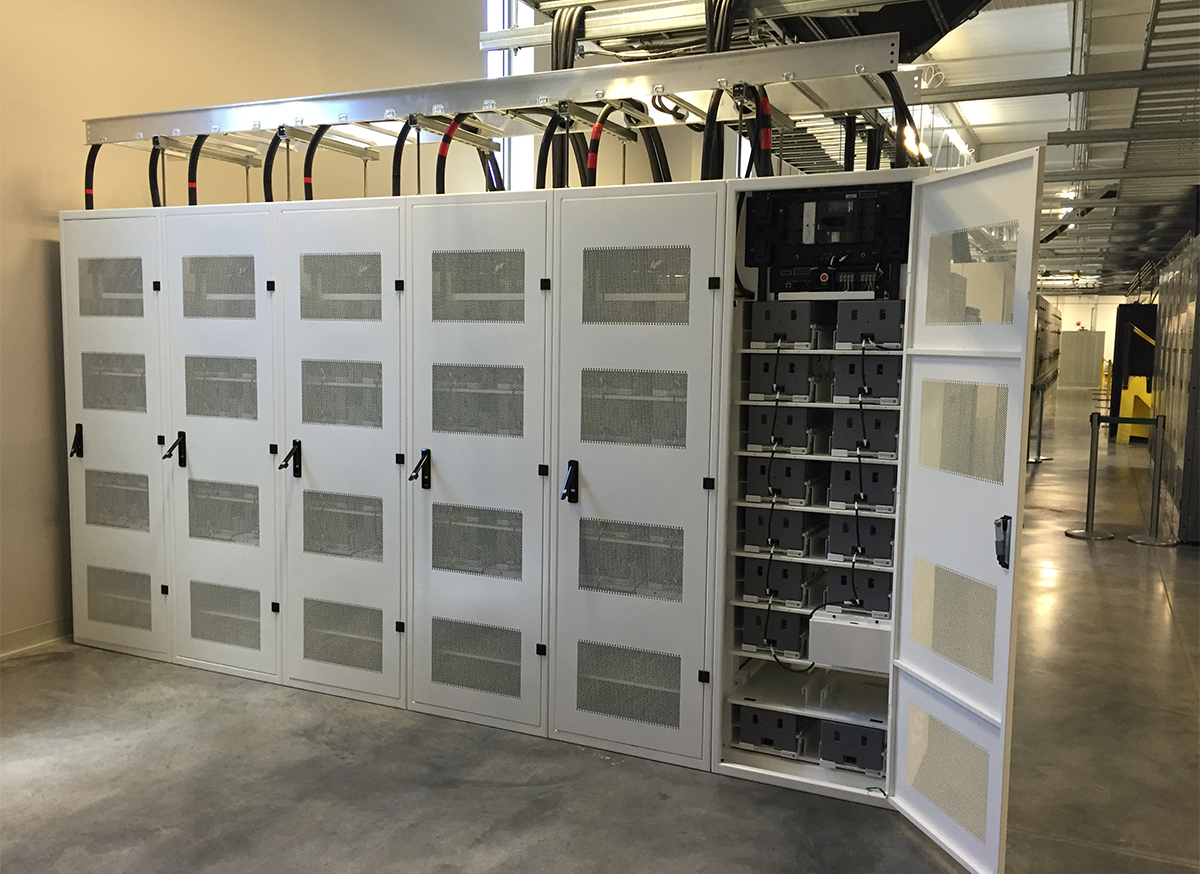
Fig. 11. Battery array with lithium-ion cells in large data center

Fig. 12. Appearance of a lithium-ion battery cell with a BMS monitoring card (Battery Monitoring System)
What is the way out?
We have proposed a solution of UPS on lithium batteries, which allowed:
The life of the battery pack on Li-ion batteries is 10 years, which is 3-5 years for ordinary VRLA batteries.
As part of this solution, there is an advanced system for monitoring the status and charging of batteries (BMS), which allows you to have information about the status of each battery cell.
The level of battery discharge during short-term interruptions in power supply does not affect the life of the entire array as a whole and amounts to more than 5000 cycles, with a lead-acid battery life of 500 cycles and a maximum of 3-4 years.
The temperature mode of operation of lithium batteries is not critical at all; temperature fluctuations within the battery cabinet do not adversely affect the life of the battery as a whole.
There is no need for supply and exhaust ventilation of the room, as when using Li-ion batteries there is no hydrogen release in principle.

Fig. 13. The appearance of the server
In this project, the customer became interested in solutions for the local protection of workstations of important employees of a 1000 VA UPS, also with lithium batteries. The difference in the cost of this type of UPS was about $ 400 - more expensive relative to the standard configuration, however, the advantages of this solution allowed us to think about the choice in favor of higher capital costs (CAPEX) in order to reduce operating costs in the future.

Fig.14. Appearance of UPS with lithium batteries to protect workstations
We will conduct a comparative description of the types of single-phase UPS models manufactured by APC by Schneider Electric with lithium and lead-acid battery modules.

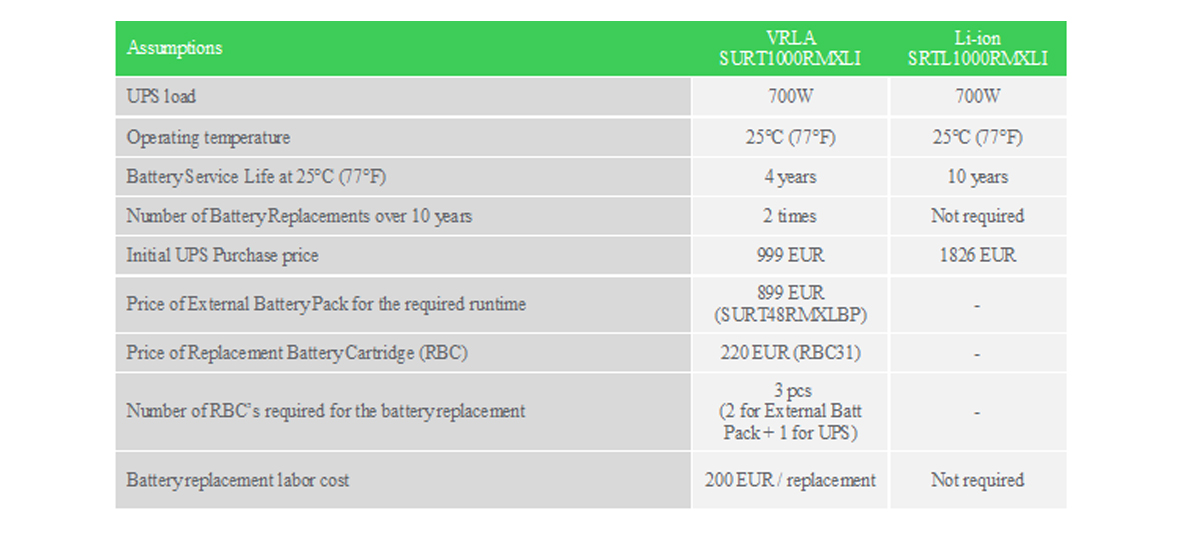
What conclusions can be drawn from the above tables:
It is important to note that the Schneider Electric solution in this power range is a solution with an On-Line topology. Currently, there are solutions for lithium and other manufacturers, but they are all built on topology Line-Interactive, that is, connect the battery, only in case of problems with the supply network.
Let's see what happens with operating expenses over the life of both types of UPS on the horizon of 10 years.
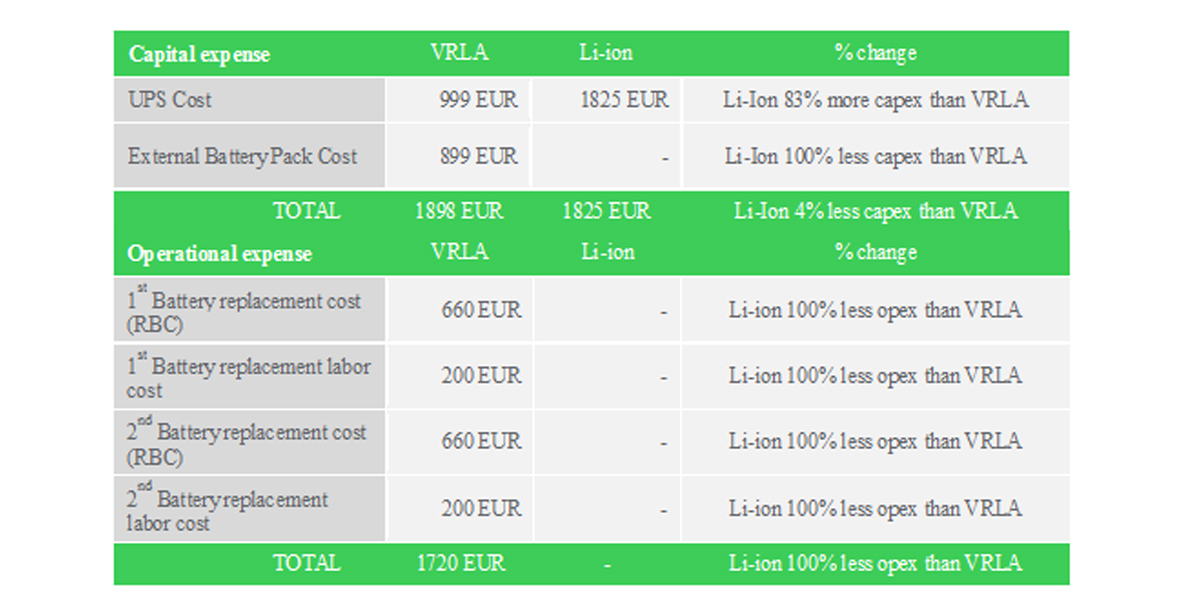

As can be seen from the OPEX and TCO specifications, operating a UPS with lithium batteries is preferable and cheaper. In this segment of the UPS (protection of workstations), it is important, first of all, the trouble-free operation of the UPS and reliable guaranteed operation time for completion by the user in the first year, and 5-7 years later. Do you know why?
Because monitoring, checking and checking for such UPSs is either not conducted at all, or is conducted on a random basis and then only after the light "blinked" and the UPS, for some reason, did not turn on and the files that the employee worked on disappeared all day. And as often happens, it was on this day that the employee had to pass the job, the report, and it was on that day that the working inspiration came down to the person and he realized all his thoughts in electronic form. Nobody wants to lose information.
But let us return again to the industrial solutions of medium and high power. What are solutions on lithium?
Consider the standard battery rack from Samsung model U6-M035

As you can see, the weight of the rack with lithium cells is only 550 kg, while the rack comes with an internal multi-level system for monitoring and protecting batteries. All protection levels have a proven selectivity mechanism — in terms of time and current, that is, “rack” level protection will not work before protection at the cell or module level:
1. The level of short circuit protection in an MCCB rack is a circuit breaker that has control of the BMS rack system. Disable the entire battery array for general average. In addition to the machine, there is also a fuse-link (fuse) of DC power circuits. Protection levels: short circuit between the poles of the rack or short circuit to earth (any pole of the battery array);

Fig. 15 Battery protection at rack level with Li-Ion batteries
2. The “module” protection level includes: use of non-flammable plastic for the modules, high-current battery leads (470 A), air gaps between the module cells for equalizing the temperature conditions of each cell, insulating covers for connecting power cables and protecting against accidental contact.
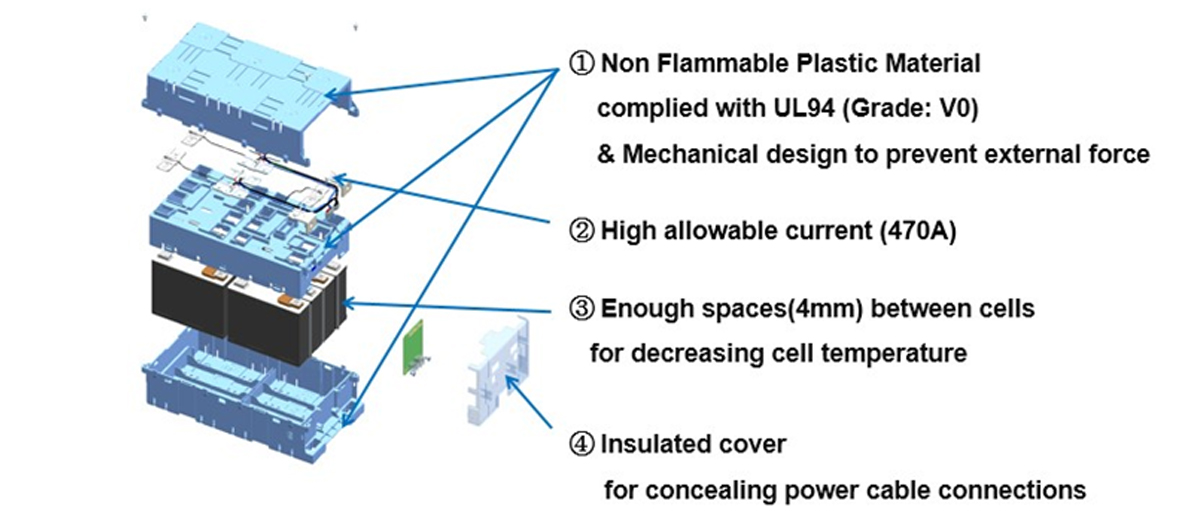
Fig. 16. Module level security
3. Cell protection level - overcharge protection, cell safety valve, electrical fuse, multi-layer cell separator, which blocks the charge at the level of electrochemical processes when the cell temperature rises above 250 ° C.
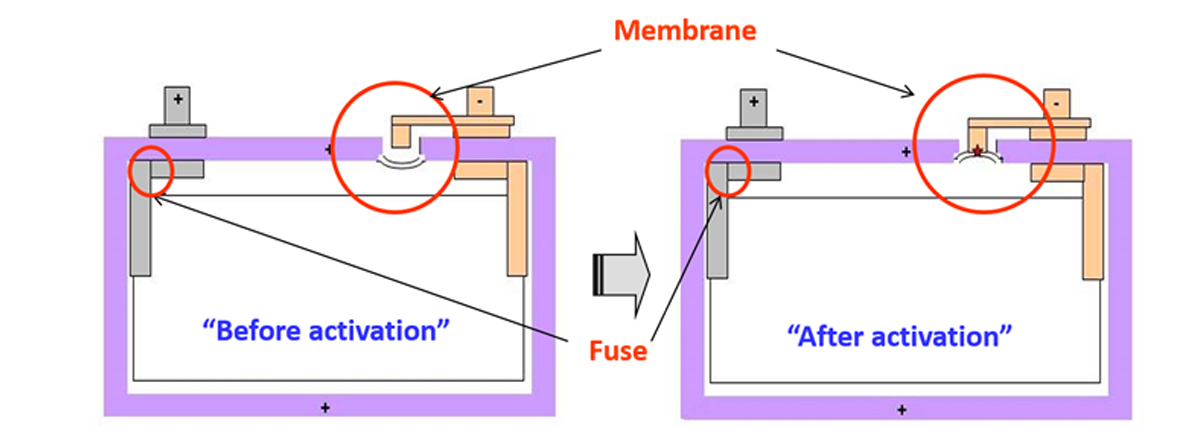
Fig. 17. Cell Level Protection
And this is what a household portable battery (power bank) looks like in which the safety valve did not work and the lithium battery broke from internal pressure. The reason for this phenomenon in this case is a short circuit in the physical structure of the battery, probably due to the degradation of the battery or improper operation. As a result, there was a "thermal acceleration" of the battery and we see the result in the photo.

Russia has its own production of lithium-iron-phosphate batteries (LFP), they are produced by the Novosibirsk company Liotech LLC, a subsidiary of OJSC RUSNANO. The Liotech company was created to implement in Russia a project for the production of modern lithium-ion batteries (LIA). Details and additional information you can read on the official website of Liotech .

At the moment, the company supplies turnkey solutions based on off-line type inverters, focused on the residential sector and solar and wind generation. However, the plant is working on the adaptation of the battery cells to any industrial UPS. The task is to develop a solution in terms of protection and obtaining fire certificates for an external battery cabinet together with a BMS system in relation to any industrial UPS on the market.
The manufacturer of lithium batteries, Liotech, states in its specifications that with a discharge depth of 80%, 3000 charge-discharge cycles can be obtained, while they continue to work further, while lead-acid batteries noticeably lose capacity. For lead-acid batteries, the stated number of cycles is given when the capacity is reduced by 40%, while Liotech claims that the decrease in capacity after 3000 cycles is only 20%. In the buffer mode and shallow cycling, AB Liotech will work 5000-7000 cycles and more.The only thing such batteries are afraid of is overcharging (you cannot charge more than 3.75 volts per cell), and a deep cell discharge (less than 2 volts cannot be discharged), so you need to install BMS (Battery management system) batteries and balancers on each cell of batteries .
Currently, manufacturing technology to ensure the protection and proper operation of lithium-ion batteries is very close to the industrial sector and solutions for backup power to critical consumers. And, although, at the moment, they still remain quite expensive, compared to classic VRLA batteries, they have their own prospects for use. First of all, these solutions are very suitable for objects where there is no possibility to keep on a permanent basis a group of operating engineers - for large objects, or where all technical support for power supply (and UPS in particular) is outsourced.
As Schneider Electric declares:
“At Schneider Electric, we are always closely following the trends, the development of technology and we are trying to act proactively. Now we see the prospect of a more easy and convenient solutions to ensure uninterrupted power supply, based on lithium-ion technology, "- explains Anna Miziev the company's strategy, development manager for the single-phase output unit IT Division of Schneider Electric
Or here's another quote the article of March 7 2018 in the edition of S-News under the heading "Schneider Electric presented single-phase UPS with lithium-ion batteries":
« Li-Ion : , 4 , ( 10 ), +40 °C . , 35% . Li-Ion .»
More >>
With visible high costs at the project implementation stage, the customer receives a reliable uninterruptible power supply system on the horizon of 8-10 years, which does not require direct monitoring of the status of each battery, periodic “training” of the battery array to clarify the real autonomy of the UPS and so on. Note that carrying out at least one full discharge-charge cycle of VRLA batteries as part of a UPS requires a lot of organizational preparation of the event and is a rather dangerous event for sensitive information equipment. In the case of using Li-ion batteries as part of the UPS, a full charge-discharge cycle is in principle not required and even contraindicated, and partial discharges of batteries in the actual data center operation cycle are even recommended by the manufacturer, and lithium batteries are initially friendly to this mode of operation.
Schneider Electric
:

This technology, although not a kind of cardinal breakthrough, still has a number of obvious advantages. And the most interesting for industrial solutions in the IT field is the specific gravity of batteries per unit area with a capacity comparable to lead batteries. The same characteristic can be considered as the specific power of batteries per unit mass - kWh / kg. But first things first.
Modern realities for home appliances
So, today each of us has a phone in his pocket, in which a lithium battery works and it is already customary for everyone.
')

Fig. 1. Nickel battery for power tools

Fig. 2. Lithium battery for power tools
Take a hand-held power tool: just yesterday it was a removable battery, made on the basis of an assembly of nickel batteries Fig. 1 (previously lead). Today we see on the shelves of stores a huge amount of any power tools with lithium batteries, which are visually smaller, compact, lightweight, etc. Fig.2. And what about the price in the domestic sector? The same power tool with lithium batteries is only slightly more expensive (and sometimes cheaper) in relation to the outgoing generation, and ease of use is indisputable.
For comparison:
- The standard nickel-cadmium battery for the Makita screwdriver, 12 V, 2.0 A * h, has a mass of 0.61 kg and has dimensions of 110x100x90 mm. That is, we have 0.305 kg / A * h. When using such batteries, household power tools will reduce power (torque) and speed in a state close to full battery discharge. Warranty - 1 year. The cost of more than 2000 rubles.
- A lithium-ion battery for a screwdriver of the same manufacturer (Makita), at a voltage of 10.8 V, 2.0 A * h, will have a mass of 270 grams and dimensions of 220x190x42 mm. That is, we have 0.135 kg / A * h. Warranty - 5 years, the cost of the order of 1200 rubles. When using such batteries, household power tools throughout the battery capacity will have the same power (torque) and full speed range, but at the moment of reaching the minimum capacity, it will simply stop working as a result of the operation of the deep battery protection circuit.
The difference in the specific mass of batteries of different types (Ampere * hour) reaches 2.2 times, that is, in one kilogram of a lithium battery there will be 2.2 times more capacity. But this is a biased comparison, because the batteries have different voltages. Let's try to recalculate the specific power values (specific power) W / kg, and we get: for a nickel-cadmium battery 39.3 W / kg, and for a lithium battery - 80 W / kg. The difference was more than doubled.
It should be noted that for screwdrivers and other energy-intensive home appliances, lithium-ion high-current batteries are used, which provide a high output current in a short period of time. At the same time, there is no voltage drop on the battery below the level of protection of the Li-Ion battery from deep overdischarge. A similar scenario is possible for the modes of wrapping and unscrewing heavy screws, nuts and other power tools, and in radio-controlled models at the start of the typewriter.
So what are the main advantages of lithium batteries compared to various types of classic electrolyte batteries?

Fig.3. Graph of specific energy versus specific power of various types of batteries
- High power and energy per unit mass. Figure 3 shows the dependence of the specific power of batteries of various types (vertical scale Watt / kg of the specific energy (horizontal scale Watt * h / kg)), which is able to give the battery of different types. Simply put - the more current (and power, respectively) gives the battery to the load, the less time it will work in minutes and hours. As you can see, battery based on lithium technology compared to classic lead-acid batteries are located on diametrically opposite parts of the graph. Also from the figure it can be understood that lithium batteries have different characteristics depending on the type, but in general they are able to release stored energy faster;
- a third lower specific gravity compared with lead batteries;
- lack of effect of "memory". That is, lithium-polymer batteries do not reduce their capacity when operating in partial discharge mode. For example, nickel-cadmium or nickel-manganese batteries exhibit this effect in the mode of repeated partial charge-discharge cycles, which ultimately leads to the fact that the battery “remembers” the lower available capacity;
- greater number of discharge-charge cycles, compared with lead batteries;
- no release of hydrogen or any harmful and explosive gases. As shown in Fig. 4, absolutely no gas evolution occurs in chemical processes in Li-ION batteries.
The principle of operation of the lithium-ion battery
As such, there is no electrolyte in a free state in a lithium battery. Instead, a porous separator soaked in electrolyte is used. Here lithium ions are used, which are bound by molecules of additional metals. When the battery is discharged, ions are transferred from the negative electrode (cathode) to the positive (anode) and vice versa during charging. The battery circuit assumes the presence of a separator separator between the two parts of the cell; this is necessary to prevent spontaneous movement of lithium ions. Diagrams of chemical processes of lead and lithium-ion batteries are shown in the figure.

Fig. 4. Chemical processes in lead batteries and lithium batteries
The class of lithium-ion batteries can be divided into subtypes of the main chemical material, which gives the battery its unique, intrinsic properties:

If we compare this classification with Figure 3, then the LFP type batteries can be attributed to the high-energy class, and the lithium-manganese LMO - to the class of average power capacity.
If we consider only the specific energy of different types of batteries, the structure is as follows:

Fig. 5. The specific energy of various types of batteries (based on the site batteryuniversity.com)
The class of lithium-ion batteries can be divided into subspecies by form factor:

The most common type of lithium-ion batteries are 65 mm high cylinders, a little more than a classic AA battery, which is used in most household devices and remote controls.
At the moment, batteries for electric bicycles and electric scooters are made of this type of battery; it is these batteries that are found in any “non-modern” laptops. In addition, from these lithium batteries were collected batteries of the first releases of cars TESLA. See >>

Fig. 6. Appearance of a cylindrical LIP battery
The market leader in the production of prismatic cells is now Samsung CDI, a division of a well-known corporation. In the field of industrial solutions, LMO cells and batteries (modules) have been developed and successfully applied. The standard voltage cell of 3.7 V has a capacity of 67A * h, the module is assembled from 8 cells, has a mass of 17 kg, has a voltage of 24-33.6 V, and the specific energy is 140W * h / kg.

Fig.7. The appearance of a prismatic LMO cell manufactured by Samsung.
After the start of the hype with electric cars, hybrid cars and public transport, it was time to actively switch to Li-Ion batteries for industrial UPS solutions.
For example, the "low-energy" segment of industrial solutions is actively switching to lithium-ion batteries. Security system equipment suppliers are also not lagging behind and offer their solutions on lithium for backup fire and security systems. The main focus is on the absence of the need to replace the batteries for 10 years, instead of the usual 2 years. A similar trend is observed in the field of evacuation warning and control systems (SOUE systems), which also belong to fire-fighting systems. Previously, such systems were equipped with acid-lead type batteries. After 2-3 years, the customer, who exploited such systems, had a lead battery in the warning systems already critically losing their capacity, and there was often not enough money to upgrade the batteries. Thus, the fire and evacuation systems of the facility were nominally fully operational, but in fact could not provide battery operation in the event of an emergency. And the safe evacuation of people, depending on the object, is given at least 30 minutes.
In the case of using batteries on lithium, such problems can be forgotten.
If you look at the analytics of the production and use of different types of batteries, for example, here, you can say that “... concerns batteries, then current estimates of the cost of installing them vary from $ 200 to $ 800 per 1 kW of installed capacity. The lowest costs correspond to lead-acid batteries, since they are at a higher stage of technological development. This range corresponds to the lower limit of cost for PSPs, but it is much lower than other potential and new storage technologies. However, the main disadvantage of lead-acid and other ABs is their low lifespan compared to PSPs, which have much longer service lives. The service life of the battery varies significantly depending on the frequency of use, the rate of discharge and the number of deep-discharge cycles. "

As we can see, the projected growth rates of lithium batteries significantly exceed the prospects of conventional batteries. In Russia, in 2017, on the website of the Ministry of Energy of the Russian Federation, the Concept for the Development of the Electricity Storage Systems Market in the Russian Federation was published. This concept also includes the production of Li-Ion batteries, "... there is a production reserve in Russia, but it requires development." The document predicts a reduction in the cost of energy storage systems of various types, in particular, for Li-Ion batteries, the cost is projected to decrease from $ 550 / kWh in 2016 to $ 300 / kWh by 2025. If Navigant Research forecasts are correct, then the cost of lithium batteries will drop another 40% relative to the current price level.
And what about the power of IT equipment in server and data centers? Let's get a look.
Real case.
One of our customers asked us to help solve the problem of powering a small server room. It seems to be nothing complicated, the usual work for us, in which we understand better than anyone.
But there are four complicating factors that are critical to the customer:
- The bearing capacity of the floor space where it was planned to place the server is very small (no more than 300 kg / sq.m), the room itself is close enough and is located on the 4th floor of an office building of class A.
- The customer wanted to be sure of the reliability of the server power supply in the event of a power outage and for reasons of expensive rental of space, he wanted to place the UPS directly in the server room.
- The battery runtime of the UPS on batteries should have provided at least 40 minutes of uninterrupted operation, and this is with a 2N power supply circuit, that is, with two UPSs and a pair of identical battery arrays.
- In the process of agreeing on the main technical solutions, there was a desire to allocate part of the server room for outside needs, that is, to further compact the equipment

Fig.8. The appearance of the server plan.
You ask, what is there unusual?
First, the customer already had a negative experience in operating a UPS with an array of lead-acid batteries. And that's how it was:
It was the fifth year after the start of operation of a sufficiently powerful UPS, the battery cabinets were operated in normal modes, the climate in the room with batteries was stable and rationed. The UPS itself has demonstrated its readiness to provide the server for 15 minutes in the event of a power outage. It seems that it was time to change all the batteries in terms of service life, but the decision to replace everything was not taken at all. And at one point, there is a sudden disconnection of the network from the city. Do you think the UPS system worked at least 1-3 minutes to complete the services on the equipment? As if not so. The worst happened: the UPS did not switch to the batteries, due to the failure of one of them, all the servers and services that were running at that moment "lay down". Fortunately, it was not a bank, but a collocation (co-location) , and the scandal somehow settled.
The thing is that the classic battery monitoring system does not provide an objective view of the state of each battery in the line, in the cabinet. Defective battery can be identified only by conducting well-regulated measures to check the capacity and health of each lead battery. In the presence of a faulty battery, the entire array of lead-acid batteries must be replaced, and measures to monitor the status of each battery were not carried out for objective reasons:
- round-the-clock operation of IT equipment - the decommissioning of an uninterruptible power supply circuit would mean a risk of a drop in all services if at that moment the power network was disconnected from the city;
- the absence of a contract with a specialized organization for maintenance of the UPS and batteries, since at the time of the refusal the legal issues of extending the maintenance contract were not agreed;
- “Calming” readings and predictions of battery life on the UPS display and UPS status monitoring systems;
- experience of a normal transition of the UPS to the battery when the network was lost six months ago.

Fig. 9. The predicted battery life on the UPS on the eve of an accident in the data center
Secondly, it was established by calculations that it is impossible to install two battery cabinets weighing 980 kg each in the server room, since the load on the overlaps from the server racks and related equipment is already maximum. It required the development and installation of a steel unloading frame for the battery cabinet. This, in turn, caused a lot of organizational issues: providing down-time for the entire server, the frame should be bolted (welding in the existing office is impossible) and so on ...

Fig. 10. Battery cabinet with conventional batteries (left) and lithium-ion cells (right)

Fig. 11. Battery array with lithium-ion cells in large data center

Fig. 12. Appearance of a lithium-ion battery cell with a BMS monitoring card (Battery Monitoring System)
What is the way out?
We have proposed a solution of UPS on lithium batteries, which allowed:
- Reduce the weight of the battery cabinet to 550 kg, which in turn eliminated the need for measures to strengthen the overlap.
- To increase the battery runtime of the UPS up to 40 minutes during a power outage, which positively affected the reliability of the customer's IT equipment.
The life of the battery pack on Li-ion batteries is 10 years, which is 3-5 years for ordinary VRLA batteries.
As part of this solution, there is an advanced system for monitoring the status and charging of batteries (BMS), which allows you to have information about the status of each battery cell.
The level of battery discharge during short-term interruptions in power supply does not affect the life of the entire array as a whole and amounts to more than 5000 cycles, with a lead-acid battery life of 500 cycles and a maximum of 3-4 years.
The temperature mode of operation of lithium batteries is not critical at all; temperature fluctuations within the battery cabinet do not adversely affect the life of the battery as a whole.
There is no need for supply and exhaust ventilation of the room, as when using Li-ion batteries there is no hydrogen release in principle.

Fig. 13. The appearance of the server
In this project, the customer became interested in solutions for the local protection of workstations of important employees of a 1000 VA UPS, also with lithium batteries. The difference in the cost of this type of UPS was about $ 400 - more expensive relative to the standard configuration, however, the advantages of this solution allowed us to think about the choice in favor of higher capital costs (CAPEX) in order to reduce operating costs in the future.

Fig.14. Appearance of UPS with lithium batteries to protect workstations
We will conduct a comparative description of the types of single-phase UPS models manufactured by APC by Schneider Electric with lithium and lead-acid battery modules.


What conclusions can be drawn from the above tables:
- A lithium battery UPS will provide a 900 W load for 32 minutes, while a UPS with built-in VRLA batteries with a 700 W load is only 14 minutes.
- The cost of a regular UPS with an external battery box is comparable to the cost of a UPS per lithium / CAPEX /.
- The service life of the UPS on lithium is provided at least twice, and this is with full loyalty to the operating temperature of the UPS and batteries. For lead-acid batteries, the optimum temperature is 25 ° C and deviations from this value will shorten the service life. Everyone understands that no one is perplexed to practice the operating characteristics of the UPS UPS workstations in practice, and this means that after 2 years of charge capacity of lead batteries of an ordinary UPS, only a couple of minutes will be enough to complete the work of critical applications and save files.
- Replacing conventional UPS batteries will incur additional costs, both for the battery itself and for the work of replacing it and disposing of the lead battery that has failed. For UPS on Li-Ion batteries, battery replacement is not required.
- The warranty on UPS solutions with lithium is 5 years, for conventional solutions - 2 years.
It is important to note that the Schneider Electric solution in this power range is a solution with an On-Line topology. Currently, there are solutions for lithium and other manufacturers, but they are all built on topology Line-Interactive, that is, connect the battery, only in case of problems with the supply network.
Let's see what happens with operating expenses over the life of both types of UPS on the horizon of 10 years.


As can be seen from the OPEX and TCO specifications, operating a UPS with lithium batteries is preferable and cheaper. In this segment of the UPS (protection of workstations), it is important, first of all, the trouble-free operation of the UPS and reliable guaranteed operation time for completion by the user in the first year, and 5-7 years later. Do you know why?
Because monitoring, checking and checking for such UPSs is either not conducted at all, or is conducted on a random basis and then only after the light "blinked" and the UPS, for some reason, did not turn on and the files that the employee worked on disappeared all day. And as often happens, it was on this day that the employee had to pass the job, the report, and it was on that day that the working inspiration came down to the person and he realized all his thoughts in electronic form. Nobody wants to lose information.
But let us return again to the industrial solutions of medium and high power. What are solutions on lithium?
Consider the standard battery rack from Samsung model U6-M035

As you can see, the weight of the rack with lithium cells is only 550 kg, while the rack comes with an internal multi-level system for monitoring and protecting batteries. All protection levels have a proven selectivity mechanism — in terms of time and current, that is, “rack” level protection will not work before protection at the cell or module level:
1. The level of short circuit protection in an MCCB rack is a circuit breaker that has control of the BMS rack system. Disable the entire battery array for general average. In addition to the machine, there is also a fuse-link (fuse) of DC power circuits. Protection levels: short circuit between the poles of the rack or short circuit to earth (any pole of the battery array);

Fig. 15 Battery protection at rack level with Li-Ion batteries
2. The “module” protection level includes: use of non-flammable plastic for the modules, high-current battery leads (470 A), air gaps between the module cells for equalizing the temperature conditions of each cell, insulating covers for connecting power cables and protecting against accidental contact.

Fig. 16. Module level security
3. Cell protection level - overcharge protection, cell safety valve, electrical fuse, multi-layer cell separator, which blocks the charge at the level of electrochemical processes when the cell temperature rises above 250 ° C.

Fig. 17. Cell Level Protection
And this is what a household portable battery (power bank) looks like in which the safety valve did not work and the lithium battery broke from internal pressure. The reason for this phenomenon in this case is a short circuit in the physical structure of the battery, probably due to the degradation of the battery or improper operation. As a result, there was a "thermal acceleration" of the battery and we see the result in the photo.

Russia has its own production of lithium-iron-phosphate batteries (LFP), they are produced by the Novosibirsk company Liotech LLC, a subsidiary of OJSC RUSNANO. The Liotech company was created to implement in Russia a project for the production of modern lithium-ion batteries (LIA). Details and additional information you can read on the official website of Liotech .

At the moment, the company supplies turnkey solutions based on off-line type inverters, focused on the residential sector and solar and wind generation. However, the plant is working on the adaptation of the battery cells to any industrial UPS. The task is to develop a solution in terms of protection and obtaining fire certificates for an external battery cabinet together with a BMS system in relation to any industrial UPS on the market.
The manufacturer of lithium batteries, Liotech, states in its specifications that with a discharge depth of 80%, 3000 charge-discharge cycles can be obtained, while they continue to work further, while lead-acid batteries noticeably lose capacity. For lead-acid batteries, the stated number of cycles is given when the capacity is reduced by 40%, while Liotech claims that the decrease in capacity after 3000 cycles is only 20%. In the buffer mode and shallow cycling, AB Liotech will work 5000-7000 cycles and more.The only thing such batteries are afraid of is overcharging (you cannot charge more than 3.75 volts per cell), and a deep cell discharge (less than 2 volts cannot be discharged), so you need to install BMS (Battery management system) batteries and balancers on each cell of batteries .
Conclusion
Currently, manufacturing technology to ensure the protection and proper operation of lithium-ion batteries is very close to the industrial sector and solutions for backup power to critical consumers. And, although, at the moment, they still remain quite expensive, compared to classic VRLA batteries, they have their own prospects for use. First of all, these solutions are very suitable for objects where there is no possibility to keep on a permanent basis a group of operating engineers - for large objects, or where all technical support for power supply (and UPS in particular) is outsourced.
As Schneider Electric declares:
“At Schneider Electric, we are always closely following the trends, the development of technology and we are trying to act proactively. Now we see the prospect of a more easy and convenient solutions to ensure uninterrupted power supply, based on lithium-ion technology, "- explains Anna Miziev the company's strategy, development manager for the single-phase output unit IT Division of Schneider Electric
Or here's another quote the article of March 7 2018 in the edition of S-News under the heading "Schneider Electric presented single-phase UPS with lithium-ion batteries":
« Li-Ion : , 4 , ( 10 ), +40 °C . , 35% . Li-Ion .»
More >>
With visible high costs at the project implementation stage, the customer receives a reliable uninterruptible power supply system on the horizon of 8-10 years, which does not require direct monitoring of the status of each battery, periodic “training” of the battery array to clarify the real autonomy of the UPS and so on. Note that carrying out at least one full discharge-charge cycle of VRLA batteries as part of a UPS requires a lot of organizational preparation of the event and is a rather dangerous event for sensitive information equipment. In the case of using Li-ion batteries as part of the UPS, a full charge-discharge cycle is in principle not required and even contraindicated, and partial discharges of batteries in the actual data center operation cycle are even recommended by the manufacturer, and lithium batteries are initially friendly to this mode of operation.
Bonus:
Schneider Electric
:
- №231, « - », Schneider Electric, 2016
- №266, « : - (VRLA) - » Schneider Electric, 2016
- №229, « : Li-Ion - (VRLA)», Schneider Electric, 2016
- « », , 21 2017 .
Source: https://habr.com/ru/post/421803/
All Articles